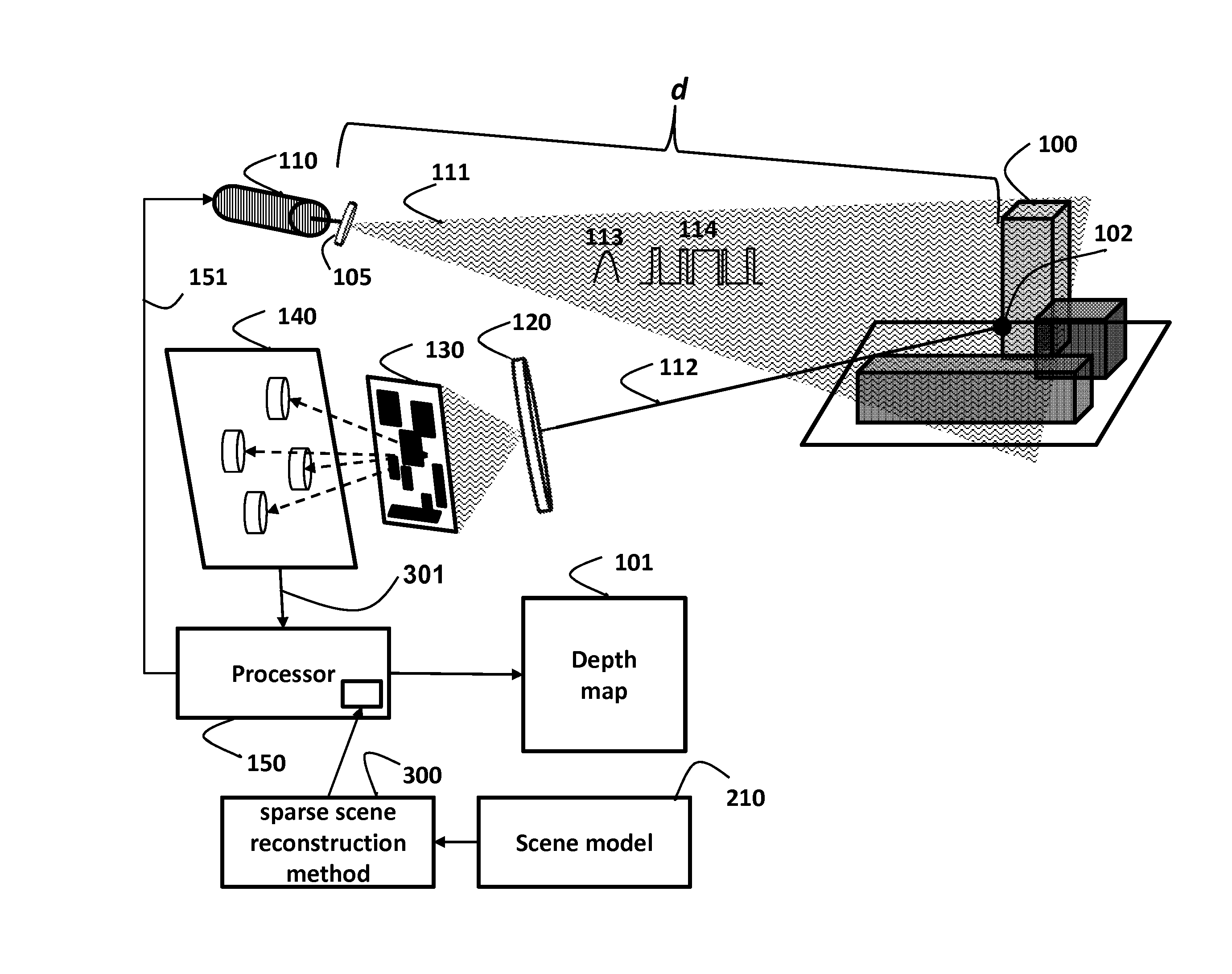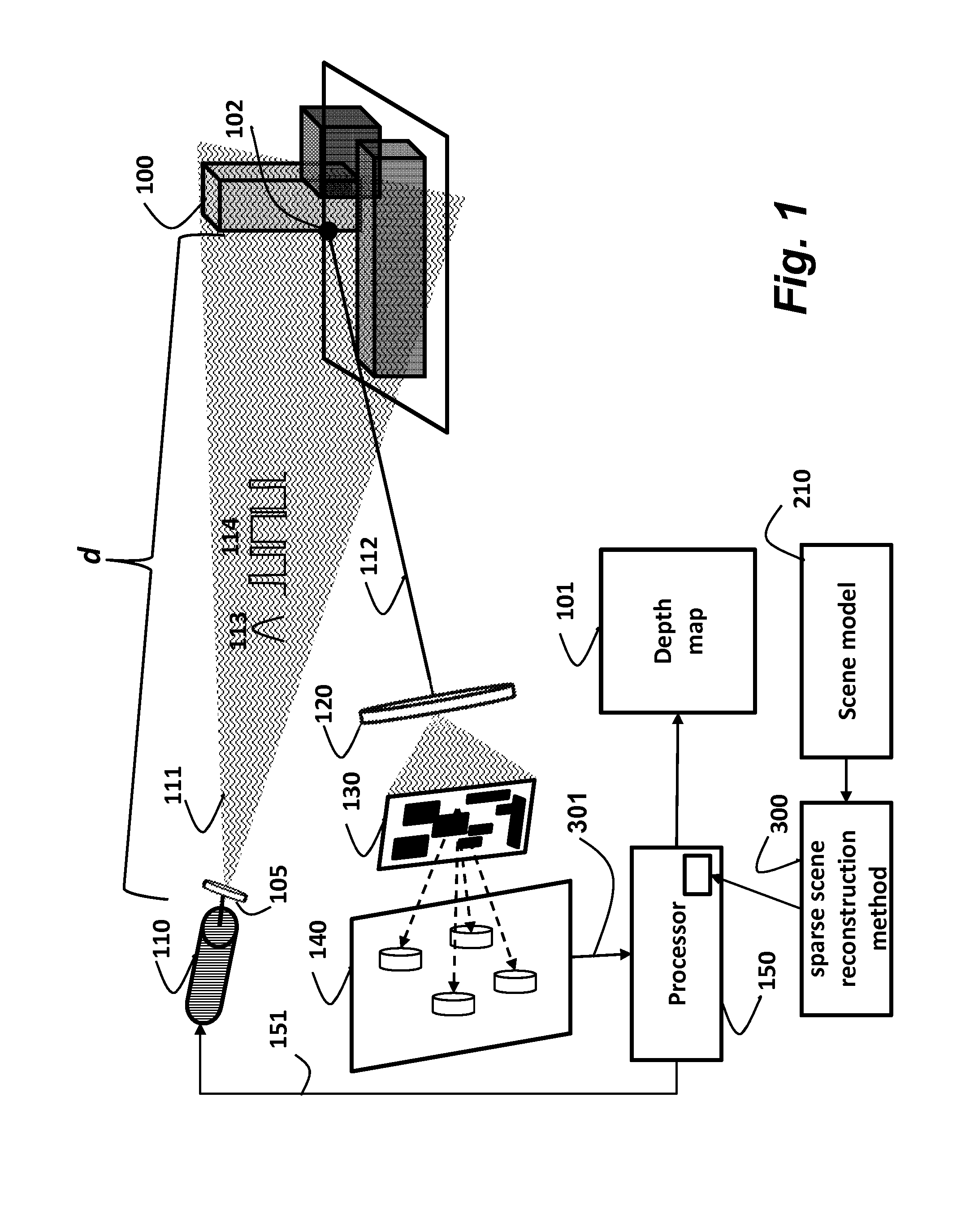Depth Sensing Using Optical Pulses and Fixed Coded Aperature
a depth sensing and optical pulse technology, applied in the field of reconstruction of scenes using optical pulses, can solve the problems of high frame rate, complex and expensive sensors, and expensive arrays of precision tof sensors, so as to reduce the number of required sensors, enhance the capabilities of depth sensing systems, and reduce the cost
- Summary
- Abstract
- Description
- Claims
- Application Information
AI Technical Summary
Benefits of technology
Problems solved by technology
Method used
Image
Examples
Embodiment Construction
[0030]The embodiments of our invention provide a method and system for reconstructing a scene using optical sensing and a fixed coded aperature.
[0031]Optical Sensing
[0032]System Architecture
[0033]As shown in FIG. 1, a stationary light source 110, e.g., a laser, transmits an optical pulse for each frame to be acquired of a scene 100. A lens turns the pulse into a wide beam pulse 111. By using a wide beam pulse, the scene does not need to be scanned. The pulse can be, for example, Gaussian shaped 113 in time. Alternatively, a coded sequence of pulses 114 can be used.
[0034]A reflected pulse 112, from each scene point 102 that is a reflector, passes through a lens 120, which disperses the reflected pulse to a set of sensors 140 arranged in a plane with the light source. This way the total distance is simply 2d. The dispersed pulse passes through a fixed code aperture 130 in the form of a mask in an optical path between the light source and the scene. The mask can be cheaply printed on a...
PUM
 Login to View More
Login to View More Abstract
Description
Claims
Application Information
 Login to View More
Login to View More - R&D
- Intellectual Property
- Life Sciences
- Materials
- Tech Scout
- Unparalleled Data Quality
- Higher Quality Content
- 60% Fewer Hallucinations
Browse by: Latest US Patents, China's latest patents, Technical Efficacy Thesaurus, Application Domain, Technology Topic, Popular Technical Reports.
© 2025 PatSnap. All rights reserved.Legal|Privacy policy|Modern Slavery Act Transparency Statement|Sitemap|About US| Contact US: help@patsnap.com



